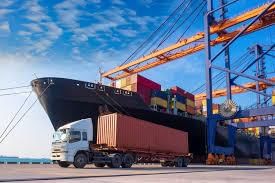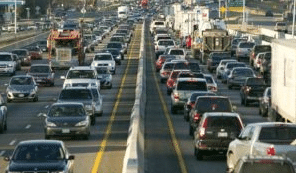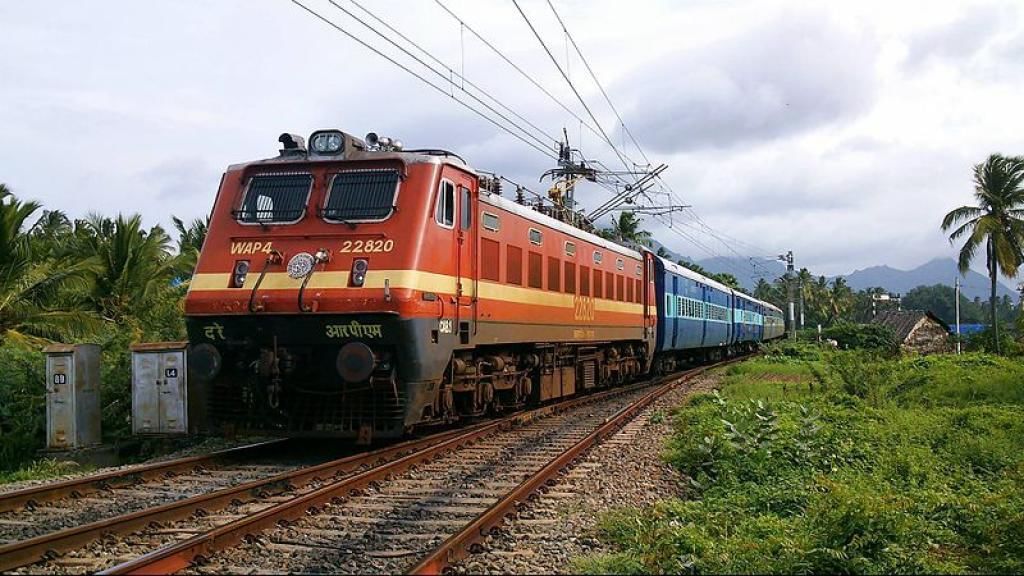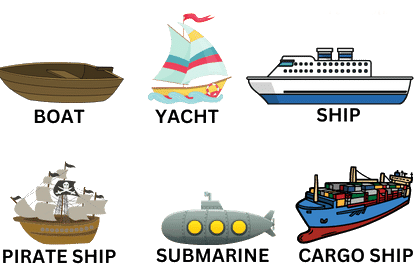Revision Notes: Transport | Geography Class 10 ICSE PDF Download
| Table of contents |

|
| Transport |

|
| Railways |

|
| Air Transport |

|
| Water Transport |

|
Transport

The economy of any nation relies heavily on its infrastructure, and a crucial component of this infrastructure is the transport system. In India, the transport system plays a vital role in the economy due to several reasons:
- It connects interior regions to other parts of the country, facilitating the use of resources.
- It promotes industrialisation and urbanisation.
- It enables the transportation of goods from one place to another.
- It helps mitigate the effects of natural disasters.
- It allows for the easy movement of people across different regions.
Roadways

India boasts one of the largest road networks in the world, spanning approximately 41 lakh kilometres, making it the second largest road network globally. The density of roads, measured by the length of road per 100 square kilometres of area, varies across the country, with Kerala having the highest road density.
The road network in India includes various types of roads:
National Highways (NHs)
State Highways
District Roads
Rural Roads, including Border Roads
National Highways
National Highways are major roads that run across the country, connecting various cities and regions. These highways are maintained by the central government and play a crucial role in the transport system. Here are some key points about National Highways:
- They handle approximately 40% of the total road traffic in India.
- Traffic on National Highways is increasing due to rapid industrialisation.
- The National Highways Authority of India (NHAI), established in 1988, is responsible for the construction and improvement of National Highways.
- Other agencies, such as the Public Works Department and the Border Roads Organisation, also contribute to the development and maintenance of National Highways.
Major Projects
Two significant projects undertaken by the NHAI to improve National Highways are:
Golden Quadrilateral
- The Golden Quadrilateral is the largest express highway project in India, connecting the four metropolitan cities of Delhi, Mumbai, Kolkata, and Chennai. This project has significantly boosted industrial growth in the small towns along its route and has facilitated truck transport across the country.
North-South and East-West Corridor
- This project aims to enhance connectivity across the northern and southern regions, as well as the eastern and western parts of India, further improving the efficiency of the road transport system.
Express Highways
Express highways are six-lane roads designed for high-speed travel without interruptions like speed breakers. Some notable express highways in India include:
- Yamuna Expressway: Connects Greater Noida with Agra, reducing travel time between Delhi and Agra by over two hours. It facilitates the transport of agricultural products from farmers to major cities.
- Ahmedabad–Vadodara Expressway: India’s first four-lane expressway, cutting the journey between Ahmedabad and Vadodara to under one hour.
- Mumbai–Pune Expressway: The first six-lane high-speed tolled expressway in India, featuring separate tunnels and fencing to prevent crossings by humans or animals.
- Panipat Expressway: Built to alleviate traffic on the busy Delhi–Amritsar route, it includes a 10-km elevated highway in Haryana.
State Highways
State highways are roads constructed and maintained by state governments. They link cities and towns within a state and connect to national highways.
Differences between National Highways and State Highways
- National Highways are built and maintained by the Central Government.
- State Highways are the responsibility of the State Government.
- National Highways connect major cities, industrial areas, and pilgrimage sites across the country.
- State Highways link district headquarters, tourist spots, pilgrimage towns, and National Highways within the state.
District Roads
- District roads connect production areas with markets within a district and link talukas with district headquarters in the state.
Rural Roads
- Rural roads are constructed to connect remote villages to the main road network, facilitating access to markets, schools, and healthcare facilities. They are crucial for the economic development of rural areas.
- Rural roads make up about 80% of the total road length in India. These roads are essential for transporting agricultural products and finished goods from production sites to markets. To improve connectivity in rural areas, the Prime Minister’s Rural Road Scheme was launched by the Government of India in December 2000 .
Border Roads
- The Border Road Organisation (BRO) was established to enhance the country’s defense capabilities.
- BRO has constructed the world’s highest road, which connects Manali to Leh.
Advantages of Roadways
- Roadways offer door-to-door services, making transportation convenient.
- The construction cost of roadways is significantly lower than that of railways.
- Roadways can be built in hilly areas, where other forms of transport may be challenging.
- They complement other modes of transport, such as connecting railway stations and ports to the inland areas.
Disadvantages of Roadways
- The road network is insufficient to meet the needs of India’s large population.
- Approximately half of the roads are unmetalled, limiting their use during the rainy season.
- The number of National Highways (NHs) is also inadequate given the country’s population.
- In urban areas, roads are often congested due to factors like encroachment by vendors.
- Heavily loaded trucks that exceed weight limits can damage roads over time.
Railways

The first railway service in India began in 1853, running from Mumbai to Thane. Today, India boasts one of the largest and busiest rail networks globally, comprising both long-distance and suburban services. Major cities like New Delhi, Mumbai, Kolkata, and Chennai have their own metro systems. Indian Railways plays a crucial role not only in transporting people but also in moving essential goods such as fertilizers, agricultural produce, and iron and steel products.
There are three types of railway tracks in India: broad gauge, metre gauge, and narrow gauge.
- Broad Gauge: Nearly all major rail routes in India use broad gauge, which has a rail distance of 1.676 metres. This type of track connects major ports with inland towns and industrial centres, handling 85% of the total goods traffic in tonne-kilometres. Broad gauge is also known as India gauge. One notable broad gauge railway line is the Konkan Railway on the west coast, an engineering marvel.
- Metre Gauge: Metre gauge tracks have a rail distance of one metre and account for 11.22% of the total rail route in India.
- Narrow Gauge: Narrow gauge tracks have a rail distance of 0.610 to 0.762 metres. This type of gauge is primarily found in hilly regions.
Advantages of Railways
- Railways are essential for transporting raw materials to production units and delivering finished products to markets.
- They facilitate the long-distance transportation of bulky goods with ease.
- Railways have effectively bridged the gap between villages and cities, fostering connectivity.
- They enable the convenient movement of people, law enforcement, and defense equipment.
- During natural disasters, railways play a vital role in alleviating suffering by providing assistance.
- Railways offer comfortable overnight journeys for passengers.
Disadvantages of Railways
- Railway tracks cannot be constructed in hilly and remote forested areas.
- Not every industrial town is equipped with railway tracks.
- Trains are unable to cross oceans, limiting their transport capabilities to land. This means they cannot move products from one continent to another.
- Train travel is generally longer and more tedious compared to air travel.
Air Transport

Air transport in India witnessed significant advancement after Independence. The country boasts both domestic and international airlines. On 1 April 1995, the Airports Authority of India was established following the merger of the National Airport Authority and the International Airports Authority. This authority is tasked with ensuring safe and efficient air traffic services across the nation.
Air India, a government-owned airline, operates flights to 50 domestic and 39 international destinations, making it the 16th largest airline in Asia. Private airlines such as Jet Airways, GoAir, and SpiceJet also contribute to the aviation sector. Cargo airlines like Deccan Cargo and Express Logistics Pvt. Ltd. and Blue Aviation Pvt. Ltd. are involved in freight services. Pawan Hans Helicopters Ltd. (PHHL) was established to provide helicopter support services, particularly for offshore oil exploration.
Advantages of Airways
- Speed: Air transport is the fastest mode of transportation, significantly reducing travel time.
- Prestige and Comfort: Air travel is considered prestigious and offers a high level of comfort to passengers.
- Accessibility: Air travel has made regions covered with dense forests, deserts, and high mountains easily accessible.
- Emergency Relief: During natural calamities like floods, when roads are impassable, helicopters are used for relief work, showcasing the utility of air transport in emergencies.
Disadvantages of Airways
- Airways are the most expensive mode of transport, making them unaffordable for the average person.
- Unlike roads and railways, air transport has not yet reached the smallest cities.
- The fuel used for air transport, petroleum, is a non-renewable energy source.
- Freight charges for air transport are very high.
Water Transport

Water transport is the most efficient way to move bulky and heavy goods. It is also fuel-efficient and environmentally friendly. There are two main types of water transport: inland waterways and oceanic waterways.
Inland Waterways
- Inland waterways connect rivers, canals, backwaters, and creeks within the country. These waterways should be free of obstacles like waterfalls and rapids.
- The Inland Waterways Authority of India (IWAI) manages these waterways and has declared five inland waterways as national waterways.
- National Waterway No. 1: Connects the Ganga–Bhagirathi–Hooghly river system from Haldia–Kolkata–Farakka–Munger–Patna–Varanasi–Allahabad.
- National Waterway No. 2: Connects the River Brahmaputra from Dhubri–Pandu–Tezpur–Neamati–Dibrugarh–Sadiya.
- National Waterway No. 3: Includes the West Coast Canal along with Champakaran and Udyogmandal, declared a national waterway in 1993.
- National Waterway No. 4: Connects Andhra Pradesh, Tamil Nadu, and Puducherry.
- National Waterway No. 5: Includes the Talcher–Dharma stretch of River Brahmi, the Goenkhali–Charbatia stretch of the East Coast Canal, and the Charbatia Dharma stretch of Malti River along with the Mahanadi delta.
- The government has declared the following as national waterways:
- The River Ganga between Allahabad and Haldia
- The River Brahmaputra between Sadiya and Dhubri
- The West Coast Canal in Kerala
Other important inland waterways include the Godavari, Krishna, Buckingham Canal, and East–West Canal.
Oceanic Waterways
- India, being a peninsular country, has a long coastline of 7,517 km, with 12 major sea ports and 187 minor sea ports.
Sea Ports
Sea ports are responsible for handling over 80% of all cargo traffic in India. Some of the major sea ports in the country include:
- Mumbai Port: This is the largest port in India, dealing with various goods, including mineral oil and dry cargo. To ease congestion, the Jawaharlal Nehru Port was established nearby.
- Mormugao Port in Goa is a significant iron ore-exporting port, ranking fifth in total traffic handled. It is a natural harbour.
- Kolkata is an inland riverine port, with Haldia Port developed on the River Hooghly to alleviate pressure on Kolkata Port.
- Paradip Port in Odisha specializes in handling iron ore and coal.
- Vishakhapatnam Port in Andhra Pradesh is the deepest landlocked port, primarily handling crude oil and petroleum products.
- Chennai Port, one of the oldest artificial ports, is second to Mumbai in trading activities, dealing with petroleum products, crude oil, fertilizers, iron ore, and dry cargo.
- Tuticorin Port in Tamil Nadu, with its natural harbour, mainly handles coal, salt, edible salt, dry cargo, and petroleum products.
- Kandla Port in Gujarat is a tidal port handling crude oil, petroleum products, edible oil, food grains, cotton, and salt.
- New Mangalore Port in Karnataka exports iron ore from Kudremukh and imports petroleum products, fertilizers, and edible oils.
- Kochi Port in the southwestern part of India, developed alongside a natural harbour, exports tea, coffee, and spices, while importing petroleum oil and fertilizers.
Differences between Oceanic Waterways and Inland Waterways
Oceanic Waterways:
- Involves transport along the coastline.
- Used for coastal and foreign trade.
Inland Waterways:
- Involves transport through navigable rivers and canals.
- Used for domestic trade.
Advantages of Waterways
- Cheapest means of transport.
- Suitable for carrying heavy and bulky materials.
- Fuel-efficient and eco-friendly mode of transport.
- Safer with less traffic compared to road and air transport.
Disadvantages of Waterways
- Dependent on weather conditions.
- Involves long hours of travel, which can cause discomfort.
- Limited to areas where rivers are navigable and oceanic routes exist.
|
33 videos|148 docs|20 tests
|
FAQs on Revision Notes: Transport - Geography Class 10 ICSE
| 1. What are the different types of roads classified under the transport system? |  |
| 2. What are the advantages of using roadways for transportation? |  |
| 3. What are the disadvantages of roadways compared to other forms of transport? |  |
| 4. What are the advantages of railways in the transport system? |  |
| 5. How do border roads function in the transport system? |  |















